detail profile ginger rogers

Ginger Rogers
Virginia Katherine McMath
atau dikenal sebagai
Riwayat Hidup
Ginger Rogers (July 16, 1911 – April 25, 1995) was an American actress, dancer, and singer who appeared in film, and on stage, radio, and television throughout much of the twentieth century.
During her long career, she made a total of 73 films and is noted for her role as Fred Astaire's partner in a series of ten musical films.
She achieved great success in a variety of film roles and won the Academy Award for Best Actress for her performance in Kitty Foyle.
After winning a 1925 Charleston dance contest that launched a successful vaudeville career, she gained recognition as a Broadway actress for her stage debut in Girl Crazy.
This led to a contract with Paramount Pictures, which ended after five films.
Rogers had her first successful film role as a supporting actress in 42nd Street.
In the 1930s, Rogers' nine films with Fred Astaire gave RKO Pictures some of its biggest successes, most notably Top Hat and Swing Time.
But after two commercial failures with Astaire, she branched out into dramatic and comedy films.
Her acting was well received by critics and audiences, and she became one of the biggest box-office draws and highest paid actresses of the 1940s.
Her performance in Kitty Foyle won her the Oscar for Best Actress.
Rogers' popularity peaked by the end of the decade.
She reunited with Astaire in 1949 in the commercially successful The Barkleys of Broadway.
After an unsuccessful period in the 1950s, she returned to Broadway in 1965, playing the lead role in Hello, Dolly!.
More Broadway roles followed, along with her stage directorial debut in 1985 of an off-Broadway production of Babes in Arms.
She also made television acting appearances until 1987.
In 1992, Rogers was recognized at the Kennedy Center Honors.
She died of a heart attack in 1995, at age 83.
Rogers is associated with the phrase "backwards and in high heels", which is attributed to Bob Thaves' Frank and Ernest 1982 cartoon with the caption "Sure he [Astaire] was great, but don't forget that Ginger Rogers did everything he did.
.
.
backwards and in high heels".
This phrase is sometimes incorrectly attributed to Ann Richards, who used it in her keynote address to the 1988 Democratic National Convention.
A Republican and a devout Christian Scientist, Rogers married five times with all of them ending in divorce, and having no children.
During her long career, Rogers made 73 films, and her musical films with Astaire are credited with revolutionizing the genre.
Rogers was a major movie star during the "Golden Age" of Hollywood and is often considered an American icon.
She ranks number 14 on the AFI's 100 Years.
.
.
100 Stars list of female stars of classic American cinema.
Her autobiography Ginger: My Story was published in 1991.
Info Pribadi
Peran Yang Di Mainkan Ginger Rogers
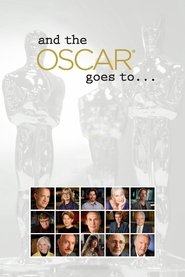 The story of the goldplated statuette...
The story of the goldplated statuette...And the Oscar Goes To... 2014
The story of the gold-plated statuette that became the film industry's most coveted prize, AND THE OSCAR GOES TO... traces the history of the Academy itself, which began in 1927 when Louis B. Mayer, then head of MGM, led other prominent members of the industry in forming this professional honorary organization. Two years later the Academy began bestowing awards, which were nicknamed "Oscar," and quickly came to represent the pinnacle of cinematic achievement.
 A TV special on the 100th...
A TV special on the 100th...Happy 100th Birthday, Hollywood 1987
A TV special on the 100th anniversary of the birth of film.
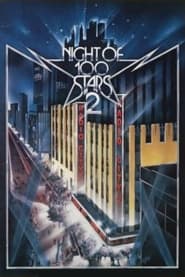 This special is the second Night...
This special is the second Night...Night of 100 Stars II 1985
This special is the second "Night of 100 Stars" to benefit The Actors Fund of America. Edited from a seven-hour live entertainment marathon that was taped February 17, 1985, at New York's Radio City Music Hall, this sequel to the 1982 "Night of 100 Stars" special features 288 celebrities.
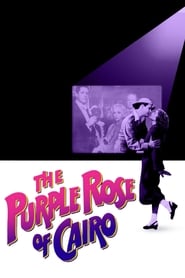 Cecilia is a waitress in New...
Cecilia is a waitress in New...The Purple Rose of Cairo 1985
Cecilia is a waitress in New Jersey, living a dreary life during the Great Depression. Her only escape from her mundane reality is the movie theatre. After losing her job, Cecilia goes to see 'The Purple Rose of Cairo' in hopes of raising her spirits, where she watches dashing archaeologist Tom Baxter time and again.
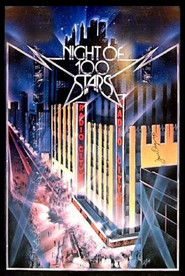 The most glittering expensive and exhausting...
The most glittering expensive and exhausting...Night of 100 Stars 1982
The most glittering, expensive, and exhausting videotaping session in television history took place Friday February 19, 1982 at New York's Radio City Music Hall. The event, for which ticket-buyers paid up to $1,000 a seat (tax-deductible as a contribution to the Actors' Fund) was billed as "The Night of 100 Stars" but, actually, around 230 stars took part. And most of the audience of 5,800 had no idea in advance that they were paying to see a TV taping, complete with long waits for set and costume changes, tape rewinding, and the like. Executive producer Alexander Cohen estimated that the 5,800 Radio City Music Hall seats sold out at prices ranging from $25 to $1,000. The show itself cost about $4 million to produce and was expected to yield around $2 million for the new addition to the Actors Fund retirement home in Englewood, N. J. ABC is reputed to have paid more than $5 million for the television rights.
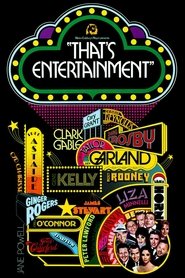 Various MGM stars from yesterday present...
Various MGM stars from yesterday present...That's Entertainment! 1974
Various MGM stars from yesterday present their favorite musical moments from the studio's 50 year history.
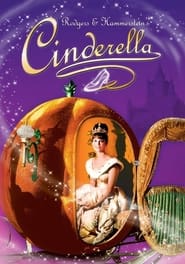 After the success of the live 1957...
After the success of the live 1957...Cinderella 1965
After the success of the live 1957 Cinderella on CBS (with Julie Andrews), the network decided to produce another television version. The new script hewed closer to the traditional tale, although nearly all of the original songs were retained and performed in their original settings. Added to the Rodgers and Hammerstein score was "Loneliness of Evening", which had been composed for South Pacific but not used.
 Research chemist Barnaby Fulton works on...
Research chemist Barnaby Fulton works on...Monkey Business 1952
Research chemist Barnaby Fulton works on a fountain of youth pill for a chemical company. One of the labs chimps gets loose in the laboratory and mixes chemicals, but then pours the mix into the water cooler. When trying one of his own samples, washed down with water from the cooler, Fulton begins to act just like a twenty-year-old and believes his potion is working. Soon his wife and boss are also behaving like children.
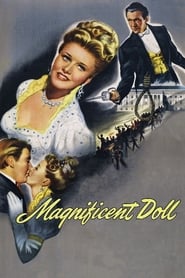 While packing her belongings in preparation...
While packing her belongings in preparation...Magnificent Doll 1946
While packing her belongings in preparation of evacuating the White House because of the impending British invasion of Washington D.C., Dolly Payne Madison thinks back on her childhood, her first marriage, and later romances with two very different politicians, Aaron Burr and his good friend James Madison. She plays each against the other, not only for romantic reasons, but also to influence the shaping of the young country. By manipulating Burr's affections, she helps Thomas Jefferson win the presidency, and eventually she becomes First Lady of the land herself.
 Dr Tony Flaggs friend Steven has...
Dr Tony Flaggs friend Steven has...Carefree 1938
Dr. Tony Flagg's friend Steven has problems in the relationship with his fiancée Amanda, so he persuades her to visit Tony. After some minor misunderstandings, she falls in love with him. When he tries to use hypnosis to strengthen her feelings for Steven, things get complicated.
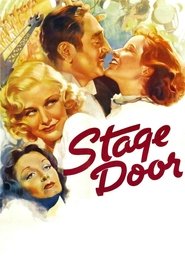 The ups and downs in the...
The ups and downs in the...Stage Door 1937
The ups and downs in the lives and careers of a group of ambitious young actresses and show girls from disparate backgrounds brought together in a theatrical hostel. Centres particularly on the conflict and growing friendship between Terry Randall, a rich girl confident in her talent and ability to make it to the top on the stage, and Jean Maitland, a world weary and cynical trouper who has taken the hard knocks of the ruthless and over-populated world of the Broadway apprentice.
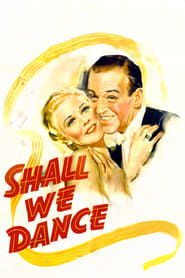 Ballet star Petrov arranges to cross...
Ballet star Petrov arranges to cross...Shall We Dance 1937
Ballet star Petrov arranges to cross the Atlantic aboard the same ship as the dancer and musical star he's fallen for but barely knows. By the time the ocean liner reaches New York, a little white lie has churned through the rumour mill and turned into a hot gossip item—that the two celebrities are secretly married.
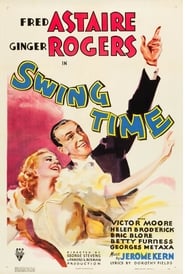 Lucky is tricked into missing his...
Lucky is tricked into missing his...Swing Time 1936
Lucky is tricked into missing his own wedding to Margaret and has to make $25,000 so her father will allow him to marry her. He and business partner Pop go to New York where they run into dancing instructor Penny. She and Lucky form a successful dance partnership, but romance is blighted by his old attachment to Margaret and hers for Ricky.
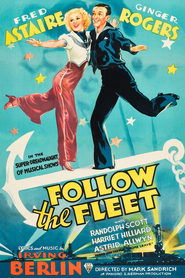 When the US Navy fleet docks...
When the US Navy fleet docks...Follow the Fleet 1936
When the US Navy fleet docks at San Francisco, sailor Bake Baker tries to rekindle the flame with his old dancing partner, Sherry Martin, while Bake's buddy Bilge Smith romances Sherry's sister, Connie. But it's not all smooth sailing—Bake has a habit of losing Sherry's jobs for her and, despite Connie's dreams, Bilge is not ready to settle down.
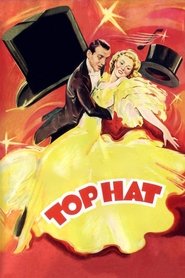 Showman Jerry Travers is working for...
Showman Jerry Travers is working for...Top Hat 1935
Showman Jerry Travers is working for producer Horace Hardwick in London. Jerry demonstrates his new dance steps late one night in Horace's hotel room, much to the annoyance of sleeping Dale Tremont below. She goes upstairs to complain and the two are immediately attracted to each other. Complications arise when Dale mistakes Jerry for Horace.
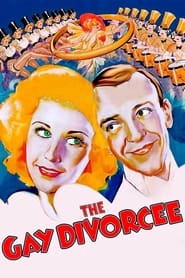 Seeking a divorce from her absentee...
Seeking a divorce from her absentee...The Gay Divorcee 1934
Seeking a divorce from her absentee husband, Mimi Glossop travels to an English seaside resort. There she falls in love with dancer Guy Holden, whom she later mistakes for the corespondent her lawyer hired.
 Rival newspaper reporters Pat Morgan and...
Rival newspaper reporters Pat Morgan and...A Shriek in the Night 1933
Rival newspaper reporters Pat Morgan and Ted Rand find themselves unraveling the mystery behind the death of a millionaire philanthropist who fell from his penthouse balcony. When it is discovered that the plunge was not an accident, the building's residents come under suspicion. Soon, the body count begins to mount as three more murders occur by strangulation.
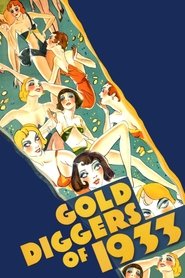 During the Great Depression all Broadway...
During the Great Depression all Broadway...Gold Diggers of 1933 1933
During the Great Depression, all Broadway shows are closed down. A group of desperate unemployed showgirls find hope when a wealthy songwriter invests in a musical starring them, against the wishes of his high society brother. Thus start Carol, Trixie and Polly's schemes to bilk his money and keep the show going.
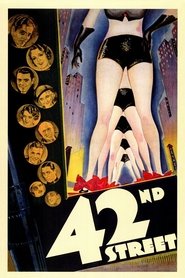 A producer puts on what may...
A producer puts on what may...42nd Street 1933
A producer puts on what may be his last Broadway show, and at the last moment a chorus girl has to replace the star.
 A young stage hopeful is murdered...
A young stage hopeful is murdered...